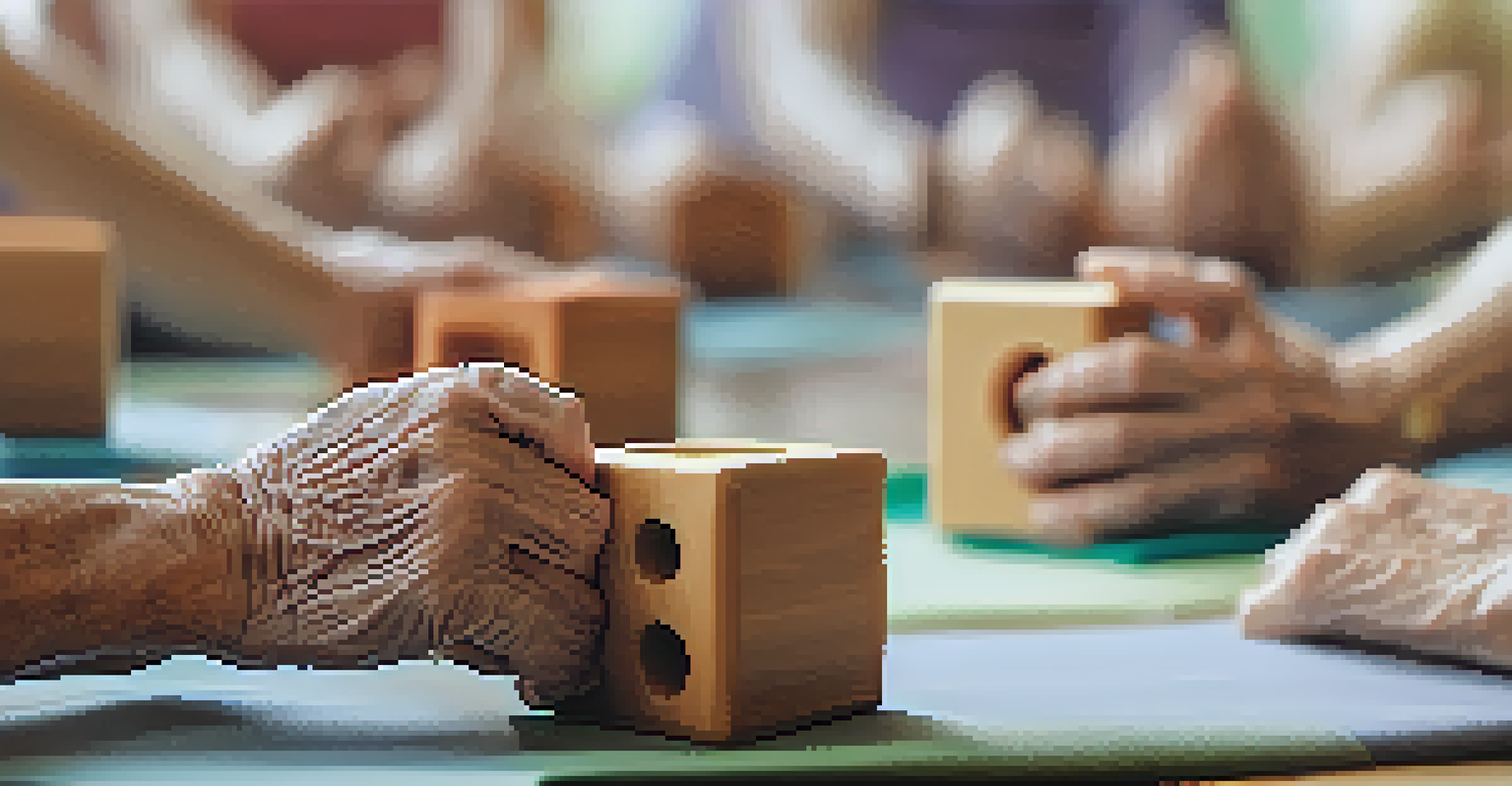Yoga for Seniors: Building Strength and Stability Safely

Understanding the Benefits of Yoga for Seniors
Yoga offers numerous benefits for seniors, including improved flexibility, balance, and strength. These components are vital as we age, helping to prevent falls and injuries that can lead to a decline in mobility. Additionally, the meditative aspects of yoga can enhance mental clarity and reduce stress, promoting overall well-being.
Yoga is the journey of the self, through the self, to the self.
Incorporating yoga into a routine can also provide a sense of community and connection. Many seniors find joy in attending classes or practicing with friends, fostering social interactions that are beneficial for emotional health. This sense of belonging can be just as important as the physical benefits.
Ultimately, yoga is a holistic practice that caters to both the body and the mind. It empowers seniors to take charge of their health, encouraging a proactive approach to aging gracefully. As we explore yoga for seniors, we’ll emphasize safe practices to ensure a rewarding experience.
Choosing the Right Yoga Style for Seniors
When selecting a yoga style, it's essential to choose one that aligns with the needs and abilities of seniors. Gentle styles such as Hatha, Restorative, or Chair Yoga are often recommended, as they focus on slow movements and deep breathing. These styles allow seniors to build strength and stability without the risk of overexertion.

Chair Yoga, in particular, is a fantastic option for those with limited mobility. It allows participants to perform poses while seated, making it accessible for everyone, regardless of their fitness level. This adaptability makes it easier for seniors to enjoy the benefits of yoga without feeling overwhelmed.
Yoga Boosts Strength and Balance
Yoga enhances flexibility, stability, and strength in seniors, helping to prevent falls and promote mobility.
It's also wise to consult with a healthcare provider before starting any new exercise program. They can provide insights into any specific limitations or considerations that should be taken into account. This ensures that the chosen yoga style will be both enjoyable and safe.
Essential Yoga Poses for Building Strength
Several yoga poses are particularly beneficial for building strength in seniors. For example, the Warrior II pose enhances leg strength and stability while promoting balance. This pose can be modified by using a wall or chair for support, making it accessible for those who may struggle with balance.
The mind is everything. What you think you become.
Another excellent pose is the Bridge pose, which strengthens the back, glutes, and legs. This pose can be performed lying on the back, making it easier on the joints while still providing significant benefits. With regular practice, seniors can notice improvements in their overall strength and stability.
Lastly, the Tree pose is great for challenging balance. It encourages focus and concentration while strengthening the legs and core. As with any pose, modifications can be made to suit individual abilities, ensuring a safe practice.
Safety Tips for Practicing Yoga as a Senior
Safety should always be a priority when practicing yoga as a senior. It's crucial to listen to your body and not push beyond your limits. If a pose feels uncomfortable or painful, it's best to skip it or modify it to ensure safety during practice.
Wearing comfortable clothing and using supportive props, such as blocks or straps, can enhance safety and comfort. These tools help to maintain proper alignment and support the body during poses. Additionally, practicing on a non-slip mat can prevent accidents and injuries.
Choose Gentle Yoga Styles
Selecting gentle styles like Hatha or Chair Yoga allows seniors to practice safely while enjoying the benefits.
Lastly, consider joining a class specifically designed for seniors. An experienced instructor can provide guidance, ensuring that participants use proper techniques and modifications. This community aspect also adds to the enjoyment of the practice.
Breathing Techniques to Enhance Practice
Breath control is a fundamental aspect of yoga that can greatly benefit seniors. Techniques such as diaphragmatic breathing help to promote relaxation and reduce stress. By focusing on deep, slow breaths, seniors can enhance their mental clarity and overall experience.
Incorporating breath awareness into yoga practice allows individuals to connect more deeply with their bodies. This mindfulness can lead to a more fulfilling experience, helping to cultivate a sense of peace and presence. It's a powerful reminder that yoga is as much about the mind as it is about the body.
Encouraging regular practice of these breathing techniques can also improve lung capacity and respiratory health. As seniors engage in breathwork, they may notice increased vitality and energy levels, making their yoga sessions even more enjoyable.
Creating a Comfortable Yoga Space at Home
Having a dedicated space for yoga practice at home can enhance the experience. Choose a quiet area free from distractions, where seniors can feel relaxed and focused. A serene environment can make a significant difference in how one engages with their practice.
It's also essential to have the right equipment on hand, such as a yoga mat, blocks, and straps. These props can provide additional support and comfort, making the practice more accessible. Consider adding personal touches, like calming music or plants, to create a peaceful ambiance.
Create a Safe Practice Space
Establishing a comfortable, distraction-free area for yoga at home encourages regular practice and enhances the experience.
A comfortable space encourages regular practice, which is key to building strength and stability. By making yoga a part of their daily routine, seniors can enjoy the long-term benefits of this enriching practice.
Incorporating Yoga into Daily Life
Integrating yoga into daily life doesn't have to be time-consuming. Even short sessions of 10-15 minutes can yield significant benefits, especially when practiced consistently. Simple stretches or breathing exercises can be done while watching TV or even sitting at a table.
Setting reminders or establishing a routine can help seniors stay committed to their practice. Whether it's morning stretches or evening relaxation techniques, consistency is key to reaping the rewards of yoga. This can also create a sense of accomplishment and motivation.

Encouraging mindfulness throughout the day can further enhance the benefits of yoga. Simple practices like mindful walking or conscious breathing can be seamlessly integrated into daily activities, fostering a deeper connection between the mind and body.